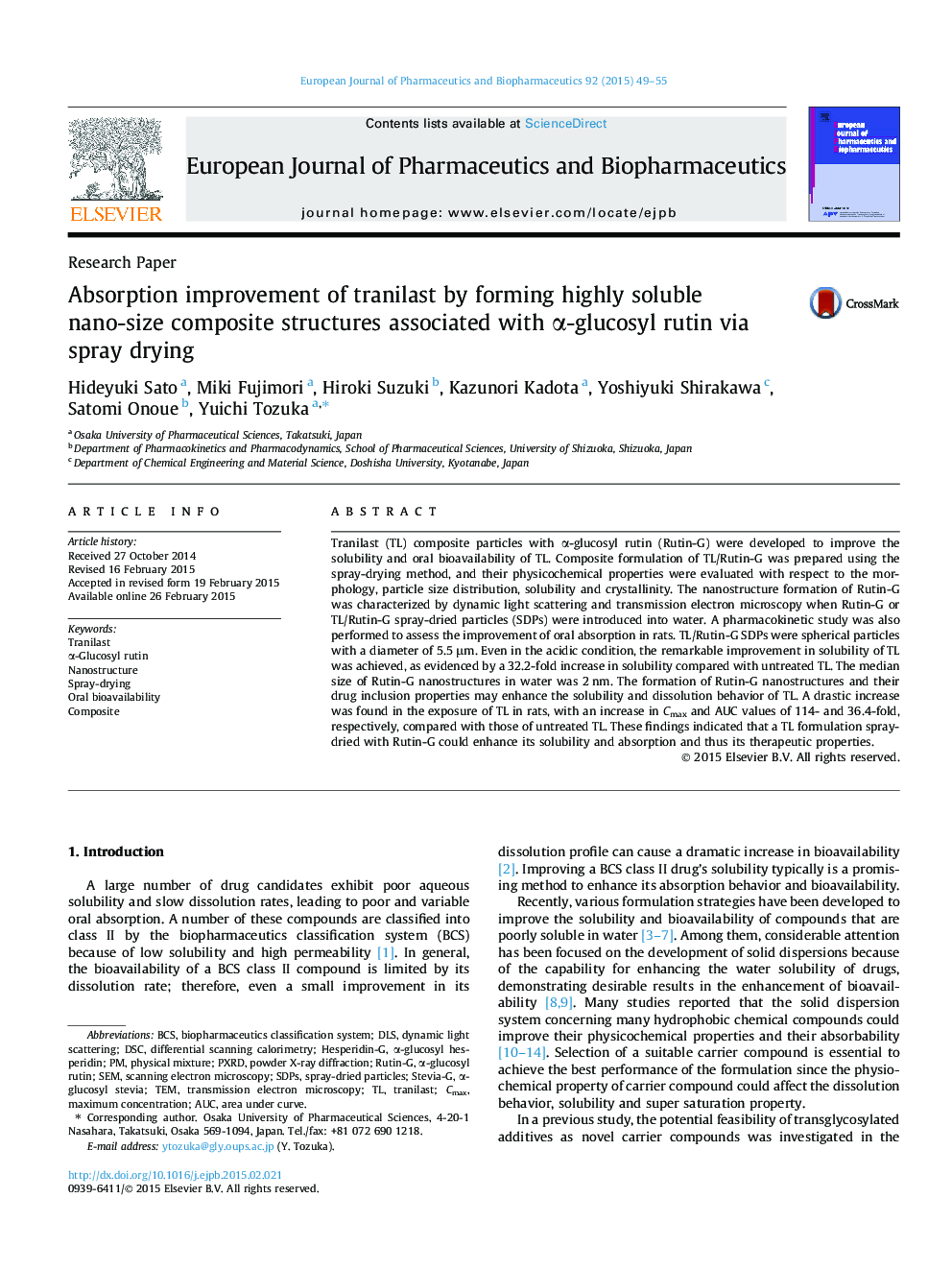| Article ID | Journal | Published Year | Pages | File Type |
|---|---|---|---|---|
| 2083336 | European Journal of Pharmaceutics and Biopharmaceutics | 2015 | 7 Pages |
•The physicochemical properties of spray-dried particles were characterized.•Alpha-glucosyl rutin nanostructures in water were ca. 3.0 nm.•Composite formulation exhibited higher absorption in rats than that of untreated TL.•Alpha-glucosyl rutin is a promising excipient for absorption enhancement.
Tranilast (TL) composite particles with α-glucosyl rutin (Rutin-G) were developed to improve the solubility and oral bioavailability of TL. Composite formulation of TL/Rutin-G was prepared using the spray-drying method, and their physicochemical properties were evaluated with respect to the morphology, particle size distribution, solubility and crystallinity. The nanostructure formation of Rutin-G was characterized by dynamic light scattering and transmission electron microscopy when Rutin-G or TL/Rutin-G spray-dried particles (SDPs) were introduced into water. A pharmacokinetic study was also performed to assess the improvement of oral absorption in rats. TL/Rutin-G SDPs were spherical particles with a diameter of 5.5 μm. Even in the acidic condition, the remarkable improvement in solubility of TL was achieved, as evidenced by a 32.2-fold increase in solubility compared with untreated TL. The median size of Rutin-G nanostructures in water was 2 nm. The formation of Rutin-G nanostructures and their drug inclusion properties may enhance the solubility and dissolution behavior of TL. A drastic increase was found in the exposure of TL in rats, with an increase in Cmax and AUC values of 114- and 36.4-fold, respectively, compared with those of untreated TL. These findings indicated that a TL formulation spray-dried with Rutin-G could enhance its solubility and absorption and thus its therapeutic properties.
Graphical abstractFigure optionsDownload full-size imageDownload high-quality image (164 K)Download as PowerPoint slide
